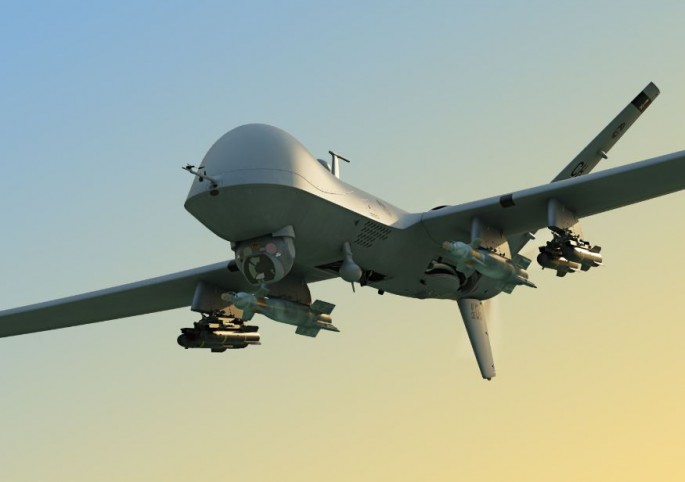An American defense contractor based in California has developed an air portable system that prevents unmanned aerial vehicles (UAVs) or drones on reconnaissance or strike missions from either being blinded by or shot down by high-intensity, ground-based lasers.
Adsys Controls, Inc. of Irvine has introduced a laser defense system it calls "Helios" for use by U.S. military aerial drones.
A military laser, otherwise known as a directed energy weapon (DEW), disables or destroys a UAV by focusing a beam of intense laser light on a part of the UAV for several seconds. The laser light burns through the fuselage of the UAV, either disrupting its aerodynamics or destroying its electronics.
But to achieve a shoot down, the laser must be directed by a control system that's vulnerable to countermeasures.
Helios is one of these countermeasures. Adsys Controls hasn't revealed how Helios disrupts the laser's control system but analysts said Helios might be an anti-laser laser mounted on the UAV.
Adsys CEO Brian Goldberg said Helios stops a laser from neutralizing a drone by disrupting the systems controlling the beam, which he said is the Achilles heel for all DEWs.
"Beam control is a critical function of high-energy lasers," he noted.
Once it detects a laser aimed in its direction, Helios identifies the laser's key characteristics such as power, wavelength, pulse frequency and its source. Helios then interferes with the beam control, preventing the laser from acquiring a lock on the UAV. Without this lock, a laser system is unable to keep the beam focused on the UAV long enough to do critical damage.
"It provides permanent protection," said Goldberg. "It's not just buying time."
Adsys Controls describes Helios as a "completely passive Counter Directed Energy Weapon system capable of nullifying the enemy's DEW.
"Consisting of a small UAV-mounted sensor package, Helios provides full analysis of the incoming DEW beam including localization and intensity. With this information it passively jams the enemy, protecting the vehicle and the payload."
The company said it specializes in state-of-the-art solutions for dynamic and optical systems.
"Our expertise includes control systems design, modeling and simulation, imaging systems, beam control, embedded real-time software, automated test systems, and system integration and test."



























